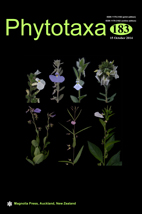Abstract
Introduction of species is a common problem in marine environments; marine macroalgae in particular have been reported to be introduced in all oceans, mainly through transport in ballast water, ship fouling and aquarium trade. The majority of the reported alien seaweeds belong to the Rhodophyta. Recently several species of the Laurencia complex have been reported, contributing to an increase of the number of red algae being successfully introduced. Since its description as a new species from Vietnam in 1997, Laurencia caduciramulosa has been spreading steadily with disjunct reports consistently finding specimens close to harbors or major ports. Biscayne Bay, Florida, home to one of the largest ports in USA, and surrounded by the Miami metropolis, is prone to receiving introduced species. This study reports the first introduction of L. caduciramulosa in Biscayne Bay, and its spread to the NW Atlantic. Morphological analysis demonstrated that the specimens collected in Crandon Park, Biscayne Bay, are similar to other specimens of the same species described for Vietnam (original description), Brazil, the Canary Islands and Cuba. Furthermore, molecular analysis using chloroplast-encoded rbcL DNA sequences corroborated the morphological identification. The phylogenetic results suggested that populations in Brazil, Canary Islands and Cuba are recent introductions, while the position of the Florida clade can be interpreted as a distinct and earlier introduction. Due to the level of expertise and knowledge of the Laurencia complex available, we suggest that in the future this group can be used as a model to conduct population genetics analysis of all described introductions in relation to native populations in order to describe patterns of expansion and provide an insight of marine invasions processes.

